Last updated on April 29, 2024

Teysa Karlov | Illustration by Magali Villeneuve
Throughout history, the aristocracy and other ruling classes have kept their power and control by exploiting their subjects or those who are beneath them in the social scale. The aristocracy wasn’t (and to some degree still isn’t) a social class that you could buy your way into. It doesn’t matter how much money you had: if you weren’t born within the aristocracy or managed to marry your way into it, you’d remain beneath them.
If you’ve always wanted to hold the kind of power that allows you to benefit from the suffering of those you deemed inferior to you, Magic has a really fun archetype for you!
What Are Aristocrat Commanders in MTG?
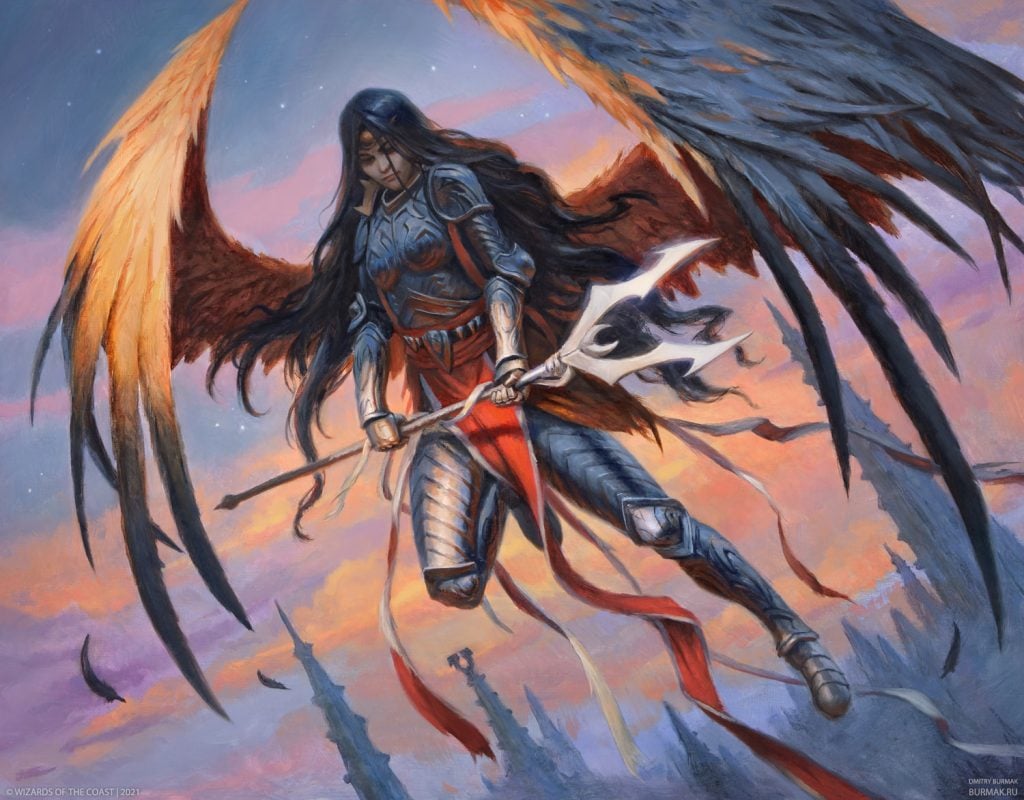
Liesa, Forgotten Archangel | Illustration by Dmitry Burmak
Aristocrats is a Magic archetype that consists of having ways to benefit from sacrificing your own creatures, or just their deaths in general. This strategy usually has to have three kinds of cards: sacrifice fodder like Doomed Traveler or Reassembling Skeleton are ideal thanks to their abilities; sacrifice outlets like Phyrexian Altar or Carrion Feeder allow you to sacrifice your creatures when you need to; and the aristocrats themselves, with cards like Pitiless Plunderer and Pawn of Ulamog that have abilities that trigger whenever your creatures die, allowing you to benefit from your sacrifices.
There are plenty of cards in the archetype that serve more than one purpose, like being able to sacrifice themselves for a payoff or by being both sacrifice outlets and payoffs. Some cards in decks within this archetype can also have reanimator-style effects to allow you to keep benefiting from your sacrifice fodder.
Aristocrat commanders usually enable this strategy by either being sacrifice outlets in some way or by having sacrifice-related payoffs. Or both.
The specific purpose of commanders in this archetype can vary. Some of them act exclusively as payoffs or ways to improve your other payoffs; some can be sacrifice outlets; and some are simply enablers for the rest of your deck.
#27. Lagomos, Hand of Hatred
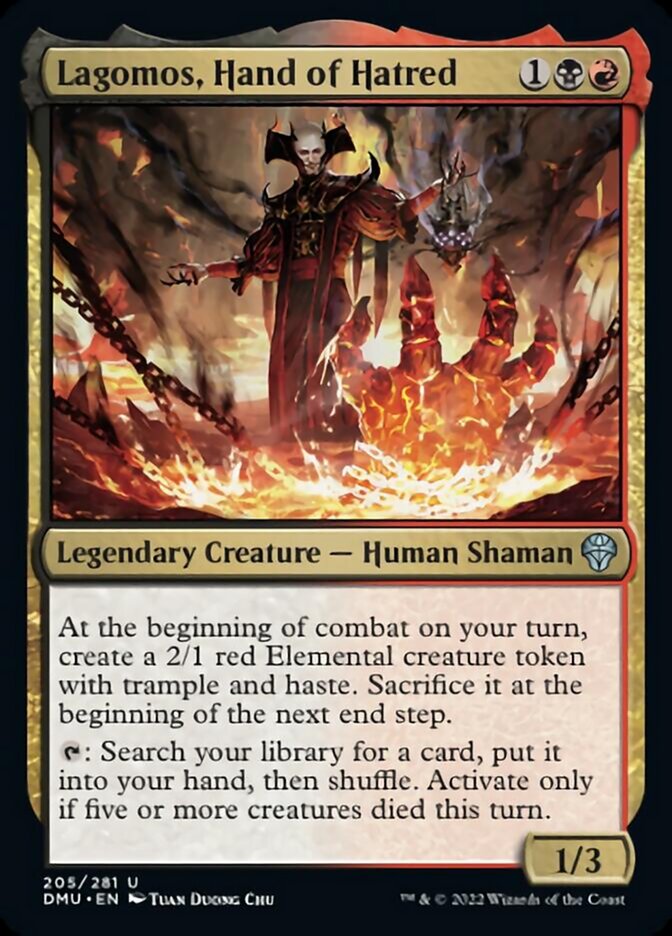
Lagomos, Hand of Hatred is an uncommon legendary creature and it shows. It’s abilities are just okay. Its passive ability is fine and can be useful in sacrifice-centric decks, but it’s the second ability that both gives this card points and takes them away.
Having a repeatable tutor on a stick can be great. The issue is it’s not really very repeatable, and the requirement of five creatures having died that turn can be pretty high. An aristocrat strategy obviously enables that ability more often than not, but it’s still an uphill struggle to truly optimize this commander.
I do have to give it some extra points for its name reminding me of the movie Manos, the Hands of Fate, and I wonder if it was on purpose. I choose to believe it was.
#26. Liesa, Forgotten Archangel

The thing about Liesa, Forgotten Archangel is that I’d rather have it in the 99 instead of as my commander. This card lets you keep you bringing back your sacrifice fodder to your hand while also exiling any of your opponents’ creatures that are killed.
Both abilities on this card are great, but I think there are better mana value-to-ability ratios for commanders in this archetype.
#25. Savra, Queen of the Golgari
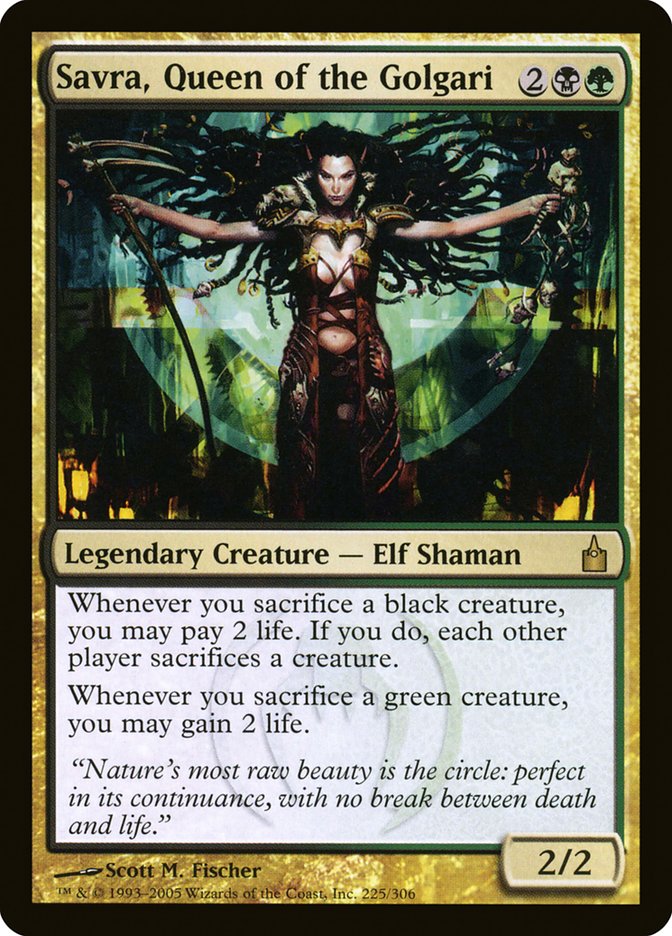
Savra, Queen of the Golgari is an absolute classic of aristocrat cards. Both of its abilities work through the sacrifice of your own creatures and can trigger to either benefit yourself or damage your opponents.
Beyond how iconic this card is, it’s somewhat fallen behind in terms of power level and usefulness. It’s far from a bad card, but you’re likely to find better commanders within this archetype.
#24. Braids, Arisen Nightmare

The ability on Braids, Arisen Nightmare is a fun throwback to the original Braids, Cabal Minion. The original is banned in Commander, but Braids, Arisen Nightmare isn’t and can prove to be a fun little card.
I’d advise using it as part of the 99 and not as your commander, though. While its effect is fun and pretty good, its payoff isn’t as good as other possible commanders for this archetype. This is mostly because this card’s effect can only be used during your endstep, so it’s not as flexible as it could be.
#23. Sméagol, Helpful Guide

Sméagol, Helpful Guide kinda falls into a similar issue as Braids, Arisen Nightmare: its main aristocrats-related ability only works at the end of the turn.
That said, it’s still a fun ability, especially when paired with its second one. You can build Sméagol, Helpful Guide around a mix of aristocrats and the Ring tempts you, which can make for some silly (but fun) gameplay.
#22. Thalia and The Gitrog Monster
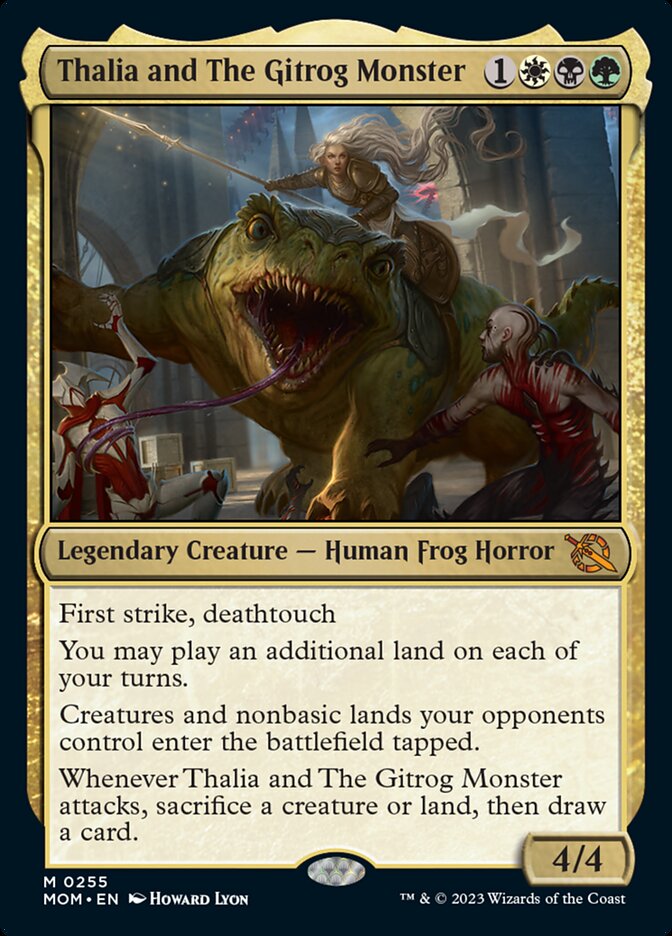
Don’t get me wrong, Thalia and The Gitrog Monster is an incredible card. It does, well, everything. It has great combat stats, lets you play extra lands, punishes your opponents for playing creatures and non-basic lands, and can serve as a sacrifice outlet and card draw on attack. So why is it this low?
In my opinion, this card just isn’t a great fit as a commander for an aristocrat archetype. It circumstantially lets you sacrifice creatures but that’s pretty much as far as it goes within the archetype. The other abilities are obviously good, but not strictly necessary for the archetype. It also has a notable positive, which is access to the Abzan color scheme, which can be a great combination for sacrifice-heavy decks.
#21. Wilhelt, the Rotcleaver

With a design that looks straight out of Tetsuya Nomura’s mind (seriously, why does Wilhelt need so many belts?), Wilhelt, the Rotcleaver is a really fun typal commander for zombies. And if there’s two thing zombies are good at, it’s dying and not staying dead.
This card can be used to build a pretty fun zombie-aristocrats deck that consistently keeps your battlefield filled with undead while also granting you some nice card advantage. It only works with zombies, which makes it pretty much useless in other aristocrat builds, but it’s still a fun card in its own little niche.
#20. Slimefoot and Squee

Slimefoot and Squee honestly makes it onto this list and this position because of its combos. If you pair it with Pitiless Plunderer, any other nontoken creature, and either Ashnod's Altar or Phyrexian Altar, you can enter an infinite sacrifice and reanimation loop.
While this possible combos are obviously great, that’s essentially the best Slimefoot and Squee has to offer for an aristocrat strategy. This would be a better commander for a reanimator type of deck, but it can still work if you’re set on building aristocrats around it.
#19. Bane, Lord of Darkness
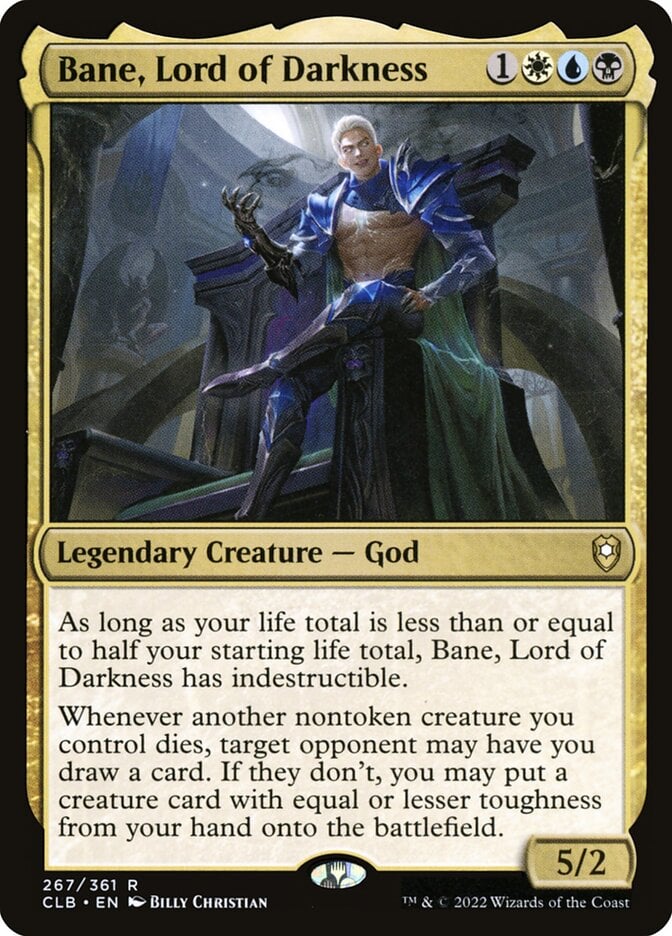
I find Bane, Lord of Darkness fun to build around, albeit a bit weird. It has some very specific requirements for its abilities, which limits (or at least heavily informs) the way you build the deck around it.
Sadly, its abilities’ particularities make it a bit too complex to properly build a more functional deck, which leaves it here on the list. But it’s still a really fun card nonetheless.
#18. Garna, Bloodfist of Keld
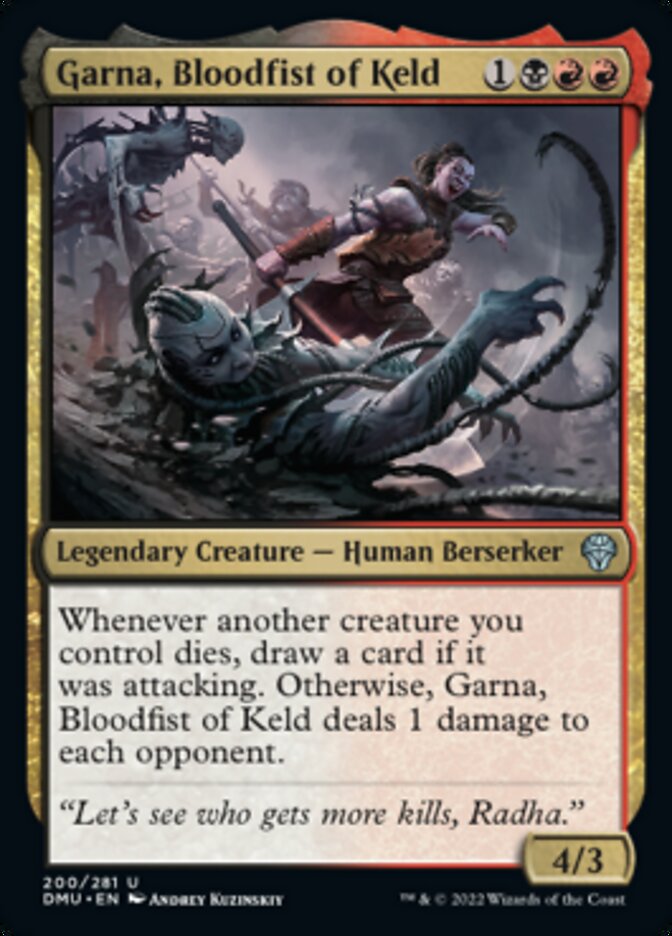
Garna, Bloodfist of Keld can work really well with token-heavy aristocrat decks. Its ability can net you a nice amount of card draw whenever you need it while also working as a great way to ping your opponents.
Since this ability triggers when your creatures die in any way, you can sacrifice your creatures to any sac outlet you may have, which in an aristocrats deck should be plenty. This card could probably work better as part of the 99 in a few decks, but it can make for a fun, more aggressive, aristocrats deck.
#17. Athreos, God of Passage
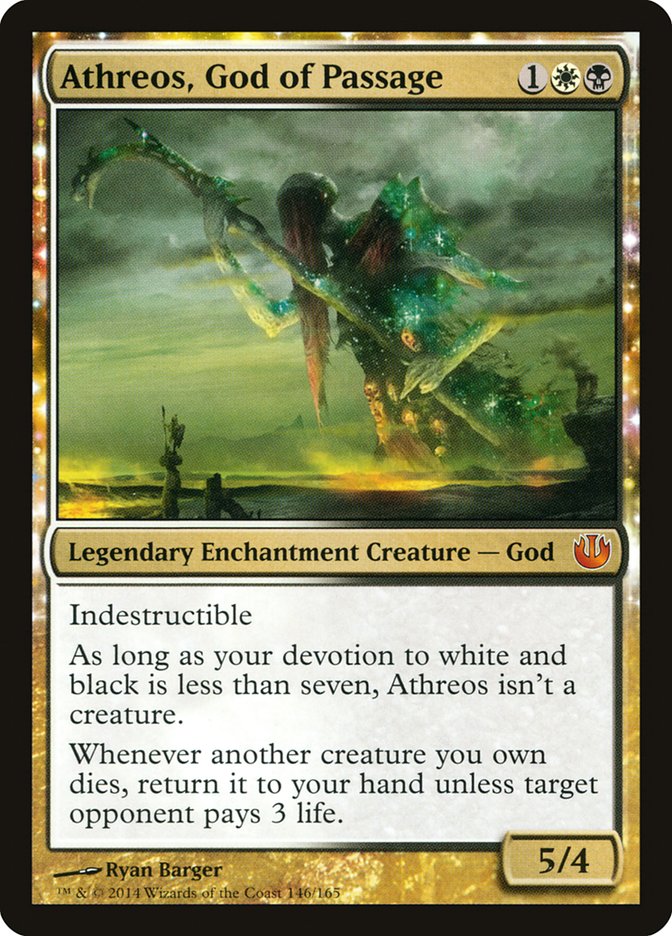
One of the things that I think was sorely missing in Theros Beyond Death was new renditions of the 2-colored gods. They were really fun to play and relatively simple yet functional abilities. They were also right after the Return to Ravnica block, so 2-colored decks were everywhere in Standard and these fit right in.
Athreos, God of Passage has a simple but extremely effective reanimation effect. It ensures your non-token creatures keep coming back to your hand unless your opponents choose to lose a pretty significant amount of life. It’s also worth noting that this card’s ability doesn’t stop your creatures from entering the graveyard; it just causes them to leave it instantly.
#16. Raphael, Fiendish Savior
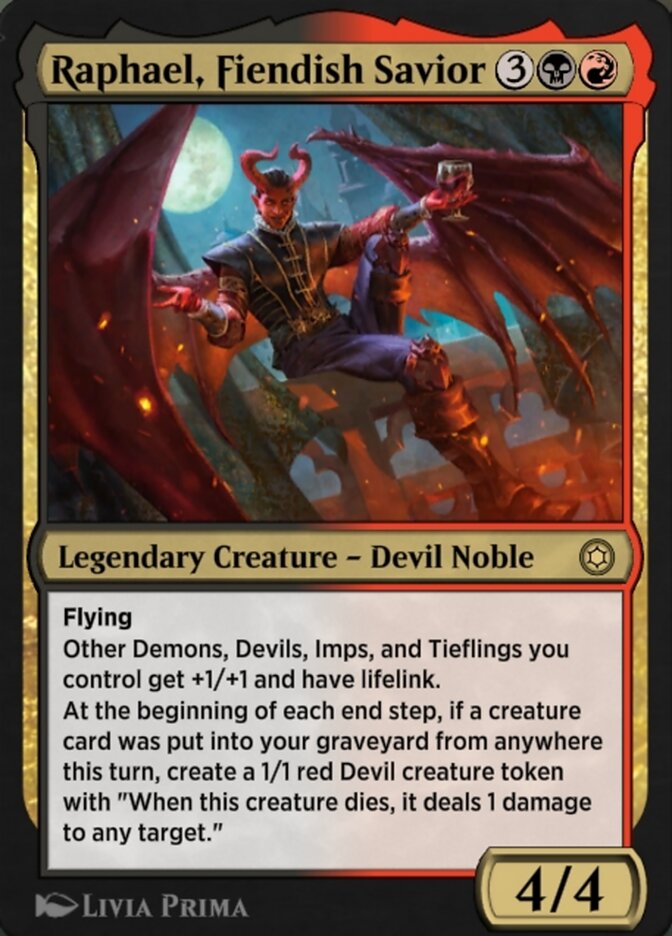
Anyone who’s already read anything by me (or knows me IRL) knows Rakdos is by far one of my favorite color combinations in MTG. I’m a fan of its mechanics but I’m also a big fan of its impossibly edgy aesthetics. Raphael, Fiendish Savior is a really nice mix of both of those things.
This card’s second ability makes it a fairly decent commander for an aristocrats strategy, and combining that with Rakdos’s penchant for sacrificing things, you’re gonna be building a devilishly big army in no time (pun intended).
#15. Henzie “Toolbox” Torre
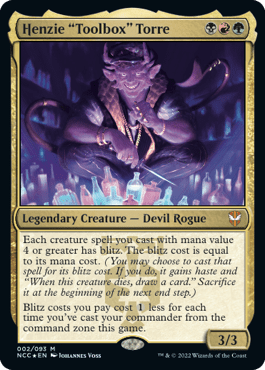
I find Henzie “Toolbox” Torre’s abilities to play into some fun ideas. The more you recast it from your command zone, the easier it becomes for you to cheat some really big threats into play.
Thanks to its first ability which gives blitz to all creatures with mana value 4 or greater, it also makes sacrificing those big creatures a profitable option. You can easily build a nice aristocrats deck around it, with a more aggro lean to it.
#14. Ayara, First of Locthwain

Mono-black likes reanimating dead creatures almost as much as it likes destroying (or sacrificing) them. Ayara, First of Locthwain embodies this cycle of death and undeath perfectly with its mechanics.
An aristocrats deck around this card can work wonderfully, but it has to be mixed with reanimation strategies that can bring your creatures back often and consistently. This will have your first ability triggering often and consistently to ping at your opponents again and again.
#13. Gisa, Glorious Resurrector
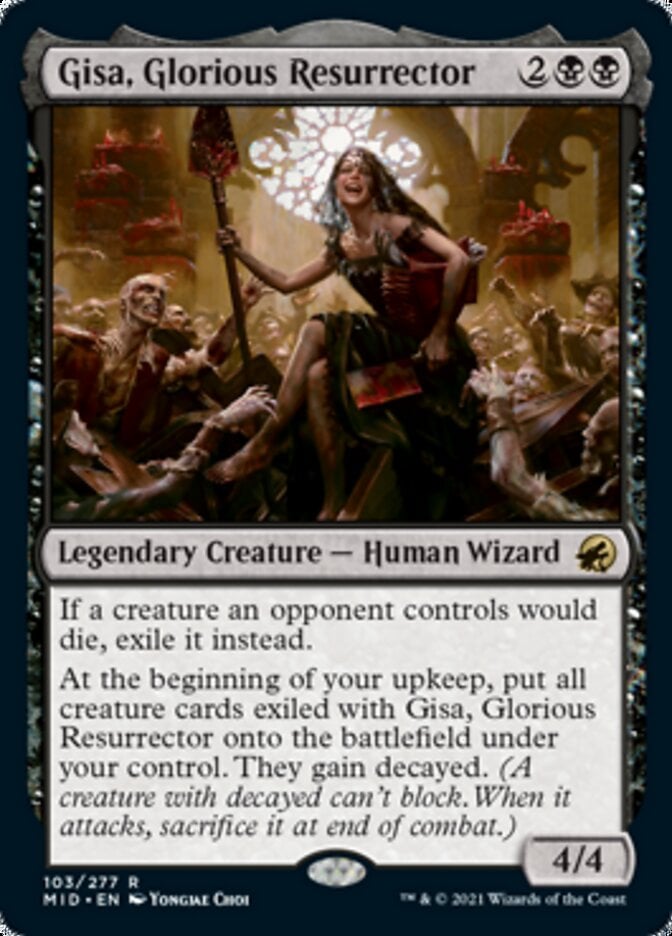
A lot of people who may not be avid mono-black players can be a bit put off by aristocrats strategies and having to sacrifice your own things. Gisa, Glorious Resurrector is here to present a simple counterargument to that: just sacrifice your opponents’ things!
This deck has to be split between a traditionally sacrifice-centered strategy and a strong amount of removal. That way you can use your sac outlets on your opponents’ creatures rather than your own. A neat little detail is that this commander gives decayed to any creatures it steals, which essentially removes any intent of actually keeping your opponents’ things for long. Just use them as fodder for your aristocrats!
#12. Drivnod, Carnage Dominus
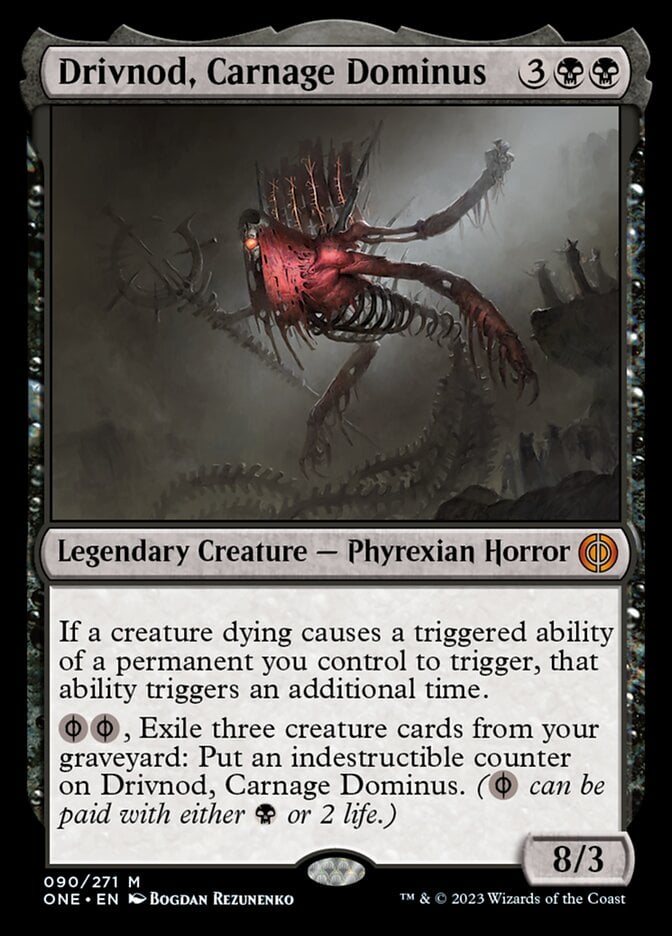
This list is starting to feel a little mono-black right now, but is anyone even surprised this is the best color for aristocrats? In any case, the phyrexian dominus of black mana is (unsurprisingly) a great card for aristocrats.
Drivnod, Carnage Dominus’s first ability makes it an amazing commander for a mono-black deck built around sacrificing your own creatures, working as an engine for every other aristocrat card out there. Plus it has a built-in way to gain indestructible, which is always nice in a commander.
#11. Ratadrabik of Urborg
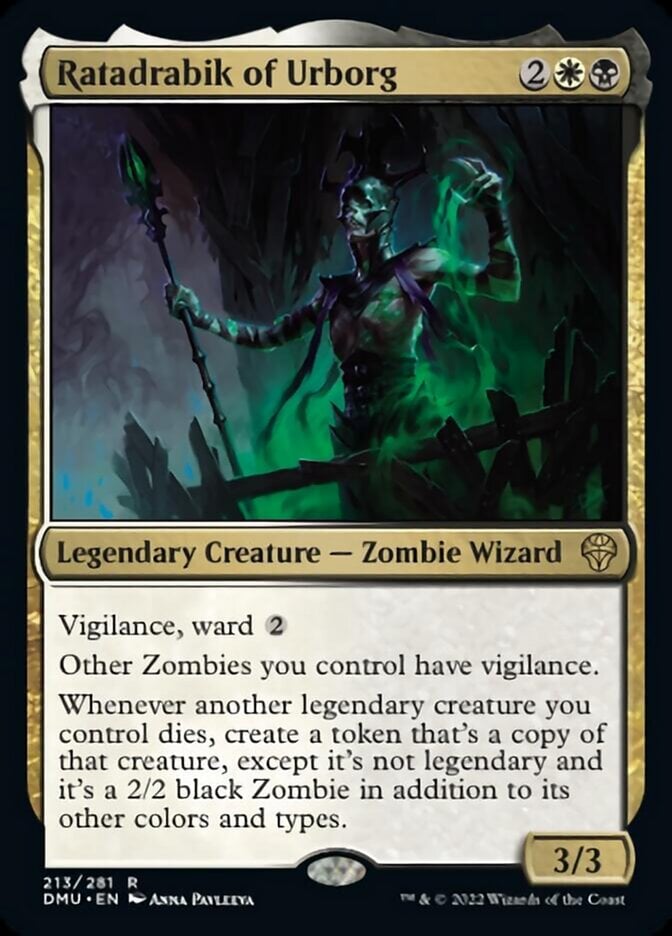
What’s better than a zombie typal deck? An aristocrats zombified-legends deck! Ratadrabik of Urborg has some really fun interactions built into its abilities, which makes it ideal for an aristocrats deck built around sacrificing other legendary creatures.
Thanks to Ratadrabik of Urborg’s ability turning your other legendary creatures into zombies, you can throw in some nice typal support to round this up into a really fun deck.
#10. Prossh, Skyraider of Kher
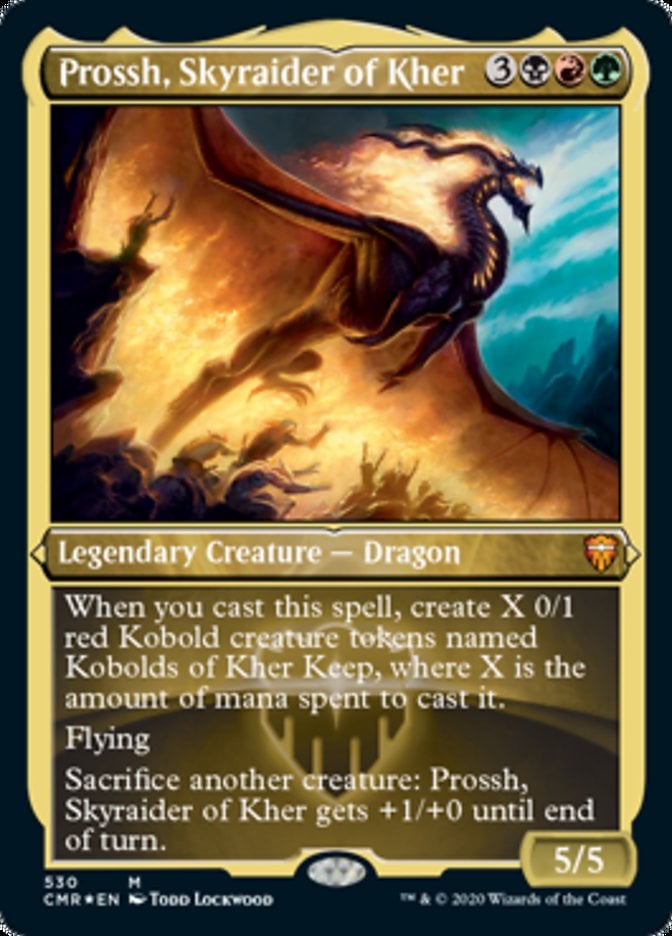
It’s always nice to see a classic EDH card remain relevant all these years later. Prossh, Skyraider of Kher entered the Commander scene 10 years ago in the Commander 2013 set of decks. As soon as it entered, it became a staple of the format due to how strong it was and how well it could be built around.
Prossh, Skyraider of Kher works as a sac outlet, using other creatures as the fodder for its fire breathing ability. It also works as a fodder generator, bringing tons of creatures into play every time it hits the battlefield.
This commander is also pretty well known for its infinite combos. Prossh, Skyraider of Kher combines neatly with Food Chain to generate infinite mana, infinite ETB, LTB, and sacrifice triggers, etc. So much so that this commander remains popular in cEDH.
#9. Marchesa, the Black Rose
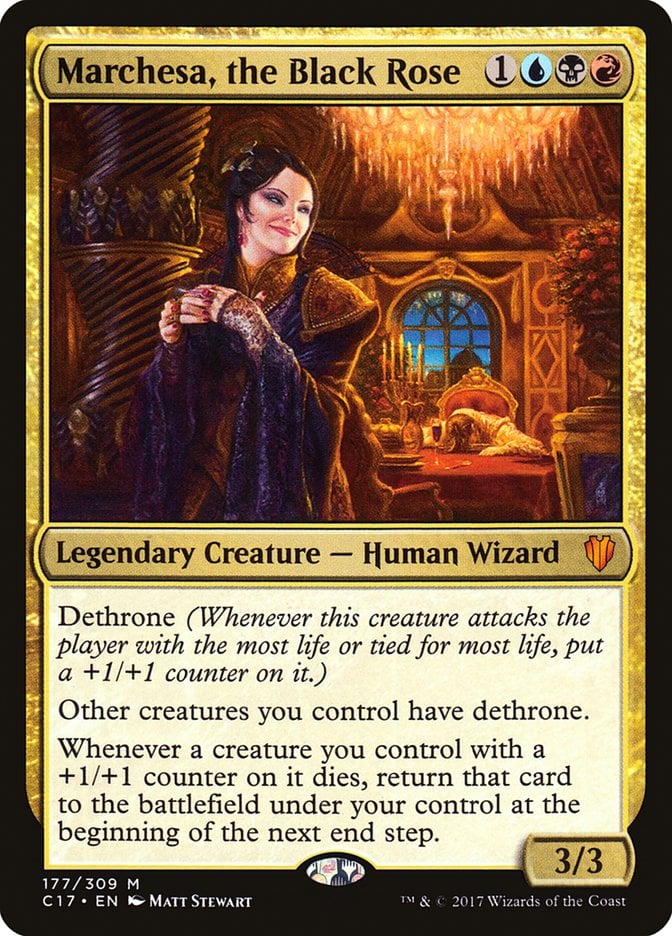
Marchesa, the Black Rose’s abilities all enable you to create some pretty neat ways to consistently sacrifice and bring back your own creatures every turn. Anything and everything with undying is a perfect addition for this deck.
But that’s not all. If you remember what I said about Gisa, Glorious Resurrector, sometimes it’s more fun to sacrifice your opponents’ creatures. With Marchesa, the Black Rose you can use cards like Act of Treason to steal an opponents’ powerful creature. Give it a +1/+1 counter either through dethrone or any other means, then sacrifice it. By the end of your turn, you’ll now have control of any creatures that went through this process.
#8. Shirei, Shizo’s Caretaker

The cards that get used as fodder in aristocrat decks are usually either creatures that grant some bonus when they die or weak creatures that you won’t miss too much when they die. Shirei, Shizo's Caretaker makes it so that your weakest fodder can keep coming back consistently.
Note also that this card’s ability activates during each end step, not just your own. Something like Bottle Gnomes can net you up to 12 life in a single round of a four-player game since you can keep sacrificing it each turn and having it come back. Add some more aristocrats on the field, some more “power 1 or less” creatures, and you can become a massive annoyance on every player’s turn.
#7. Elenda, the Dusk Rose
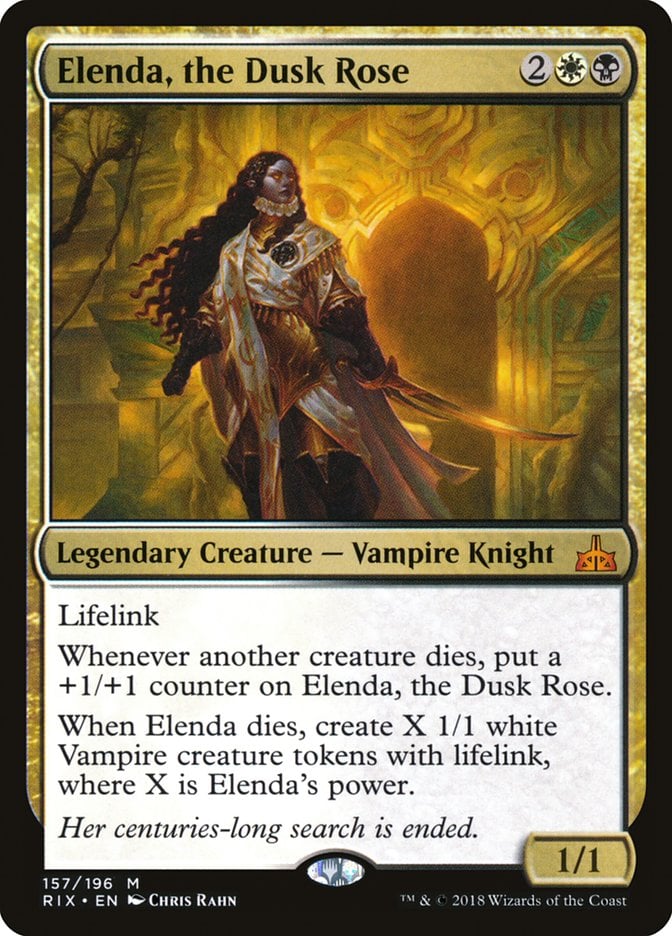
Vampires have been the go-to monster to represent the blood-sucking aristocracies in literature for centuries. While things may have changed a bit with time, the children of the night are still strongly associated with the aristocracy, and Magic is no exception.
Elenda, the Dusk Rose is an archetypal MTG aristocrat: whenever another creature dies, it’ll get stronger and bigger. With proper sacrifice outlets and fodder, this can be done the very turn it comes in.
But even if that power surge makes Elenda, the Dusk Rose a target for removal, it won’t be a problem. When this card dies, it’ll fill your battlefield with vampires with lifelink that can both serve as an army to take out opponents or as fodder for your aristocrats.
#6. Elas il-Kor, Sadistic Pilgrim

I’ll admit Elas il-Kor, Sadistic Pilgrim may not be as exploitable or broken as some of the other choices that have come before. So why is it at this point in the list? Because it’s a very archetypal aristocrats card and a very simple way to get started in the archetype.
This commander has the ideal color identity for this strategy, Orzhov , and has two very straightforward abilities that’ll let you profit off of a very generic aristocrats strategy. It may not be as broken as something like Prossh, Skyraider of Kher, but it’s fun, straightforward, and very far from bad.
#5. Chatterfang, Squirrel General
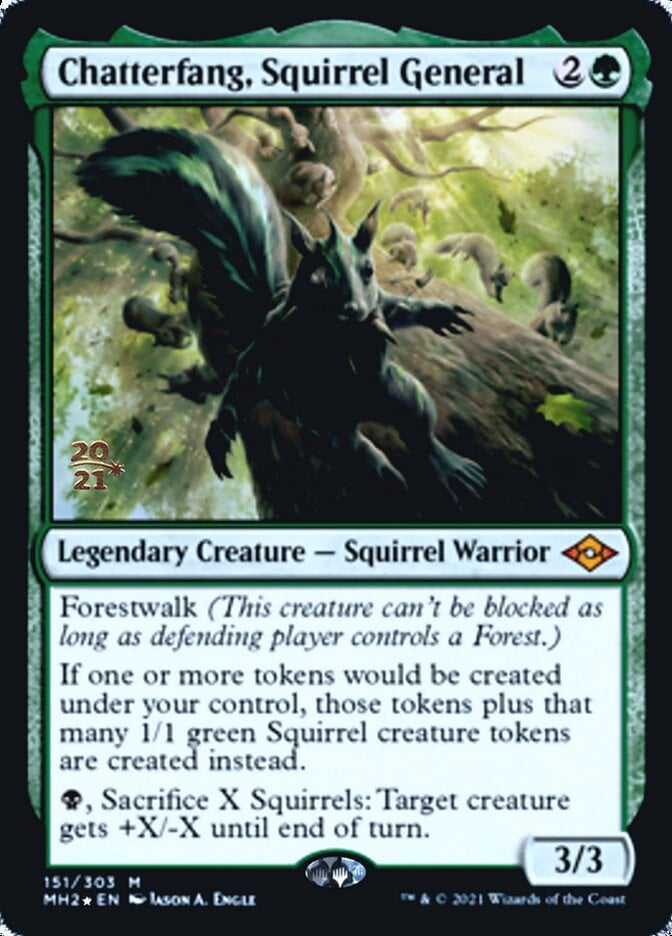
A very common thing in aristocrat decks is creating creature tokens, usually as a trigger of other creatures you control dying. Chatterfang, Squirrel General plays into this by mirroring the number of tokens that’d be created by creating that many Squirrel tokens. This obviously makes it absurdly easy to create a massive army that can also be used as fodder for your sac outlets.
In addition, Chatterfang, Squirrel General also works as a sac outlet that can take out other creatures, including indestructible ones, by giving +X/-X to a target creature. I don’t even want to mention how easy it is to make it combo with Pitiless Plunderer.
#4. Yawgmoth, Thran Physician
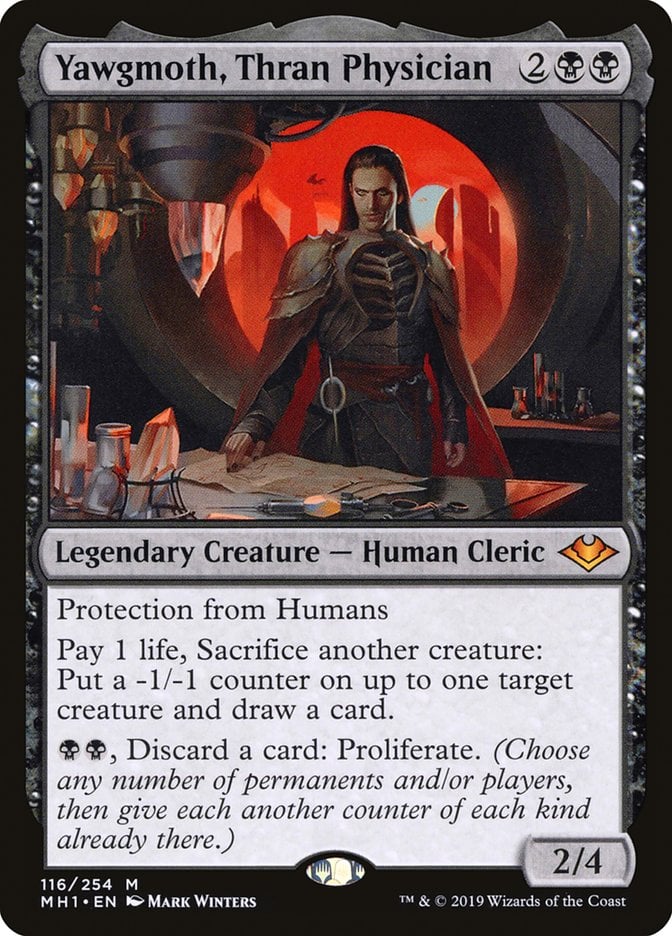
No matter how much the praetors of New Phyrexia tried to emulate the glory of the Father of Machines, it’s honestly impossible for any MTG villain to be a more iconic leader to Phyrexia than Yawgmoth himself. One thing that the original Phyrexia really exploited was death, both of their enemies and their own.
Yawgmoth, Thran Physician makes for an incredible aristocrats commander. Its first ability is simply ridiculous: for the meager cost of a single life point you get a sac outlet, a way to place -1/-1 counters on other creatures, and card draw.
This ability can be exploited in tons of ways, including several ways to go into an infinite combo, all of which make use of the aristocrats archetype’s main characteristics.
#3. Korvold, Fae-Cursed King
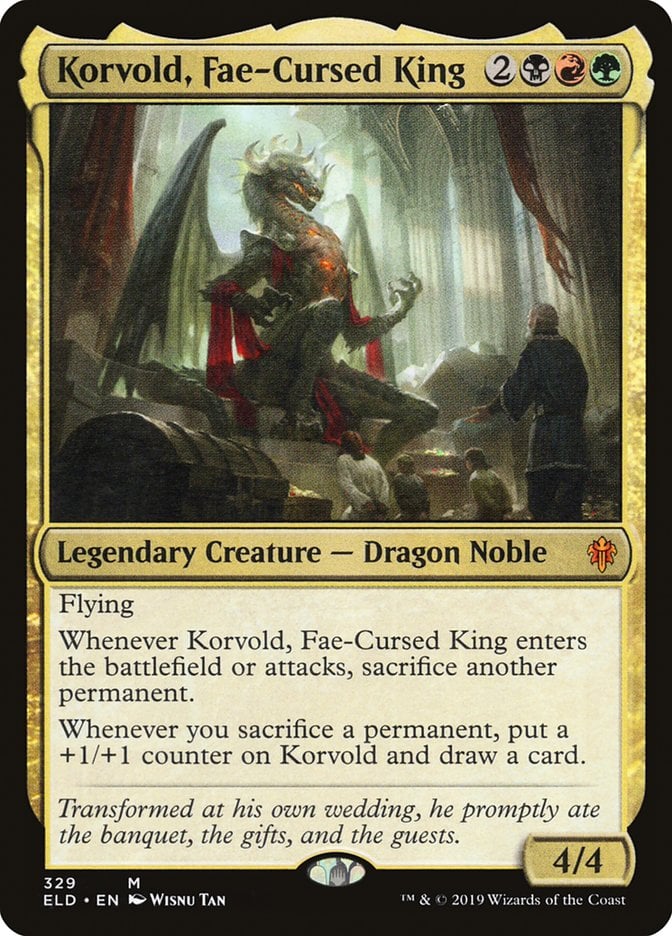
Korvold, Fae-Cursed King has two very simple things in its favor: being in Jund colors gives it access to lots of great cards that pair amazingly with it, and its second ability triggers whenever you sacrifice any other permanent. Treasures, Foods, and any other token that you sacrifice to activate also make Korvold, Fae-Cursed King stronger.
This commander isn’t only good by itself but it also works as an enabler commander, allowing you to fit many other powerful combos into your deck just because their pieces also synergize well with it on their own.
#2. Meren of Clan Nel Toth

Commander 2015’s theme of energy counters was a neat design that fit right into the format. Meren of Clan Nel Toth is one of the most well-known cards from that set of decks and with good reason. It’s a staple in graveyard-centric strategies and a must-have in many decks.
Meren of Clan Nel Toth’s abilities make it a really fun commander for aristocrats, serving as a resurrection engine that triggers every turn. This makes it so that none of your important creatures stay dead for long, as well as returning any particularly good pieces of fodder you may want to keep sacrificing.
This card used to be more of a staple some years ago, but even though there are now some competitors for its place in plenty of decks, it remains an incredible card and a super fun aristocrats commander.
#1. Teysa Karlov
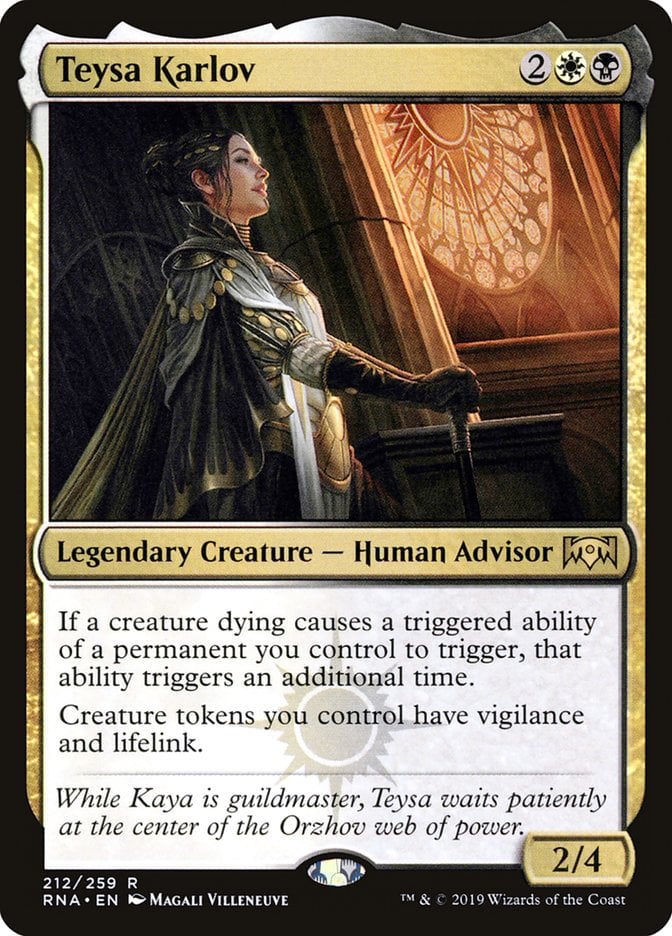
I’ve mentioned that creating creature tokens is extremely common in aristocrat strategies. You need to replace those sacrificed creatures with something, after all. Teysa Karlov neatly combines buffing your token creatures and doubling the benefits from aristocrat abilities.
This card feels very polished. The abilities are strong without being so broken it makes it unfun, it fits perfectly into the archetype it’s meant to fit into without any unnecessary drawbacks, and it gives access to Orzhov , by far the most common colors for aristocrat strategies.
Best Aristocrat Payoffs
Aristocrats is an archetype that has had a ton of support over the years. Every time we go back to Ravnica, the Orzhov are sure to have tons of support for it, but even the Rakdos and Golgari can get some nice cards to expand it.
There are also plenty of other sets that have had different factions that focus on aristocrat-style strategies. The point is you have tons of cards for the archetype, which also enables some variety (even if some cards are simply better for it than others).
Some obvious or classic picks for aristocrat decks include Zulaport Cutthroat, Grim Haruspex, and Mayhem Devil.
There’s also the cannon fodder for the decks. Doomed Traveler is a very concise example: a cheap and unremarkable creature with a death trigger that makes it a prime sacrifice target. Solemn Simulacrum is also a classic example. Then there’s those that can self-sacrifice for an effect like Spore Frog or Saffi Eriksdotter.
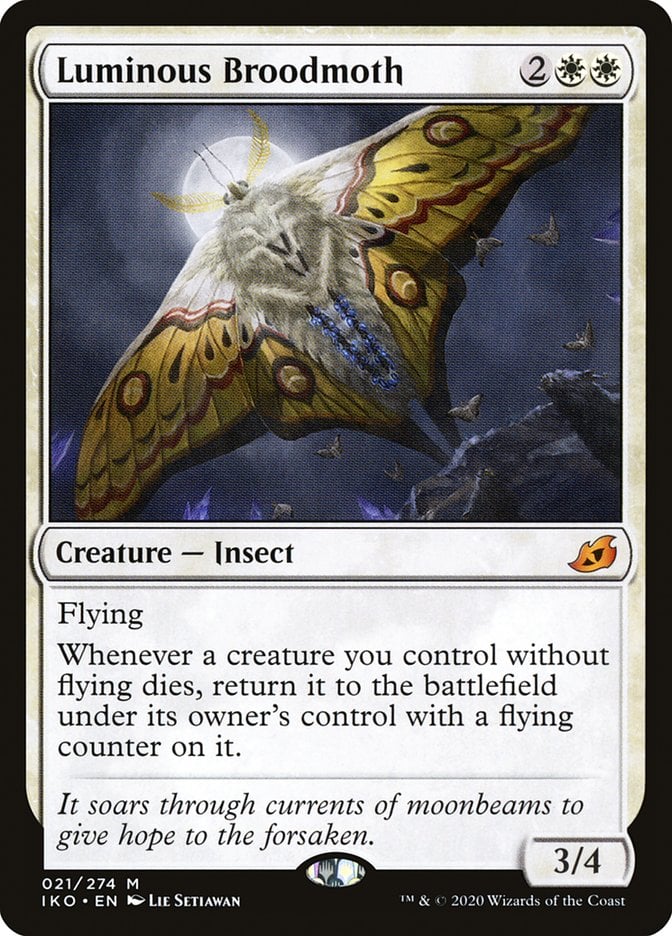
Some cards that can also greatly benefit this archetype are those like Luminous Broodmoth, which brings back the creatures you sacrifice but with the added advantage of a flying counter. This will make it easier and even more enticing to sacrifice your own creatures.
Commanding Conclusion
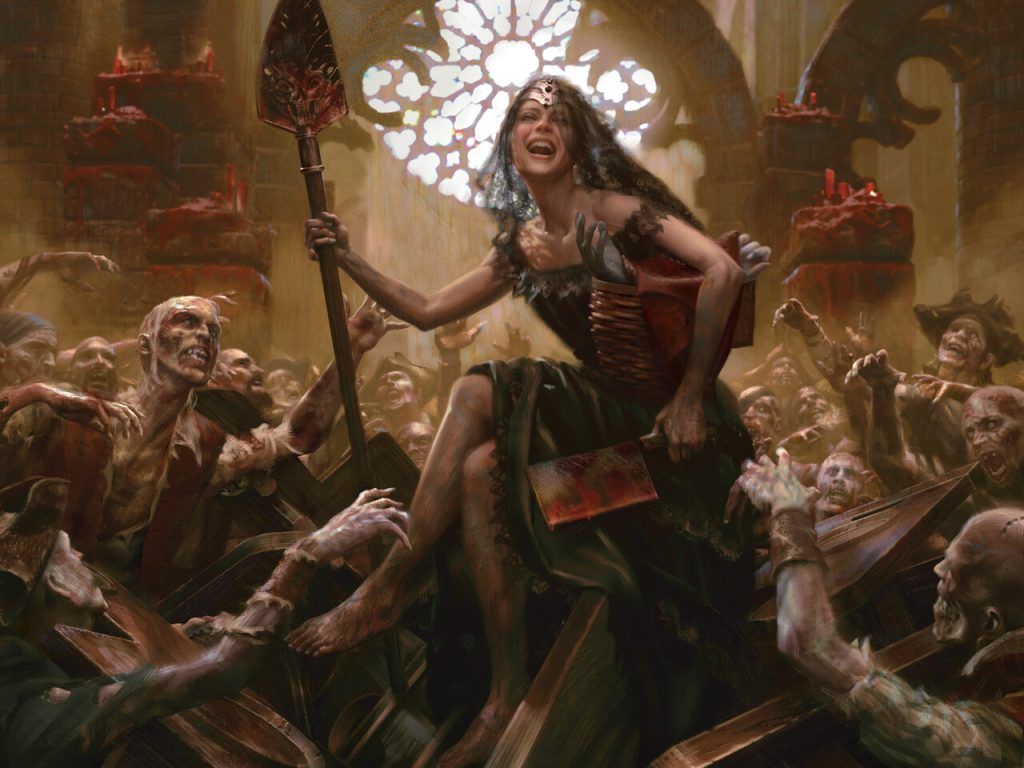
Gisa, Glorious Resurrector | Illustration by Yongjae Choi
I’m a huge fan of the aristocrats archetype. I think it’s extremely fun to play, and it puts its focus on a relatively out-of-the-box style of play (even if by this point it’s one of the most popular archetypes). It's versatile and can be built in many different ways, emphasizing more aggro or defensive styles of play or even building a deck that doesn’t really need to attack at all if played right.
But enough about what I think. What’s your opinion on the aristocrats archetype? What’s your favorite commander for it? Do you think I missed any important ones? Let me know in the comments! And while you’re here make sure to pay our Discord server a visit; there you’ll find an amazing community of MTG fans to share your hobby with.
That’s all from me for now! Have a good one and I’ll see you next time.
Follow Draftsim for awesome articles and set updates: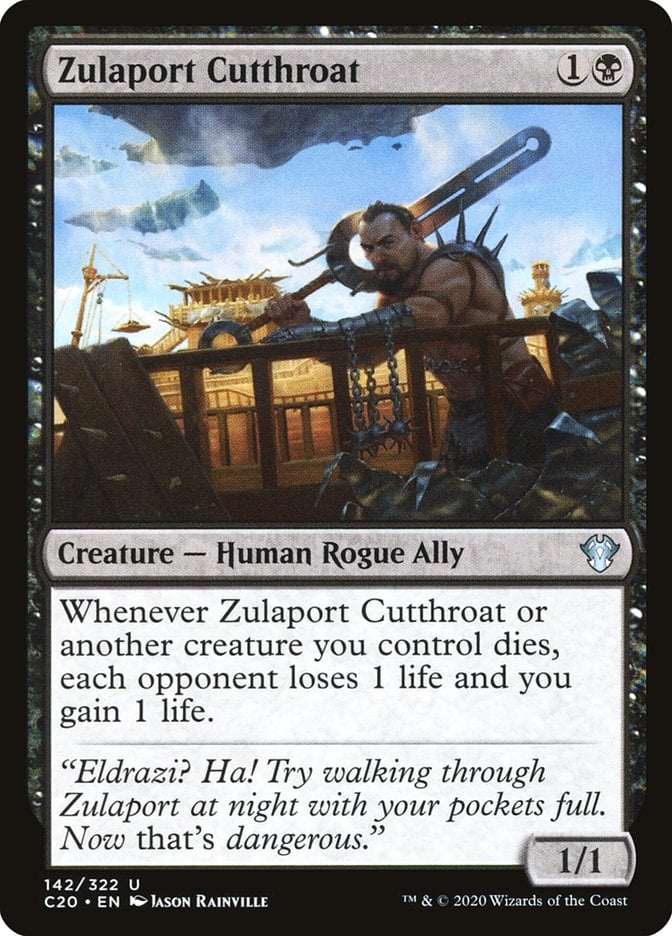
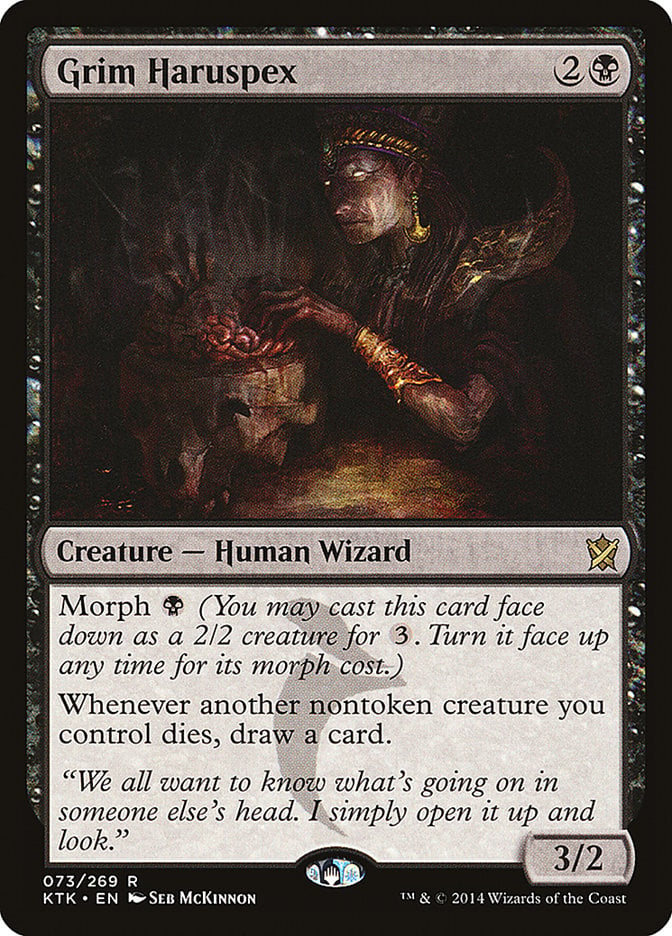

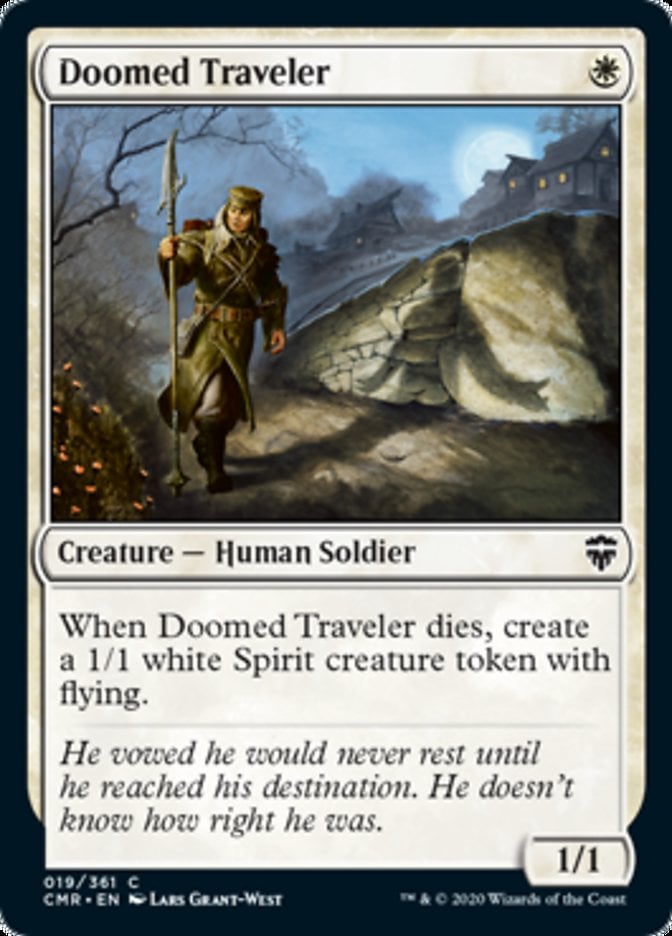
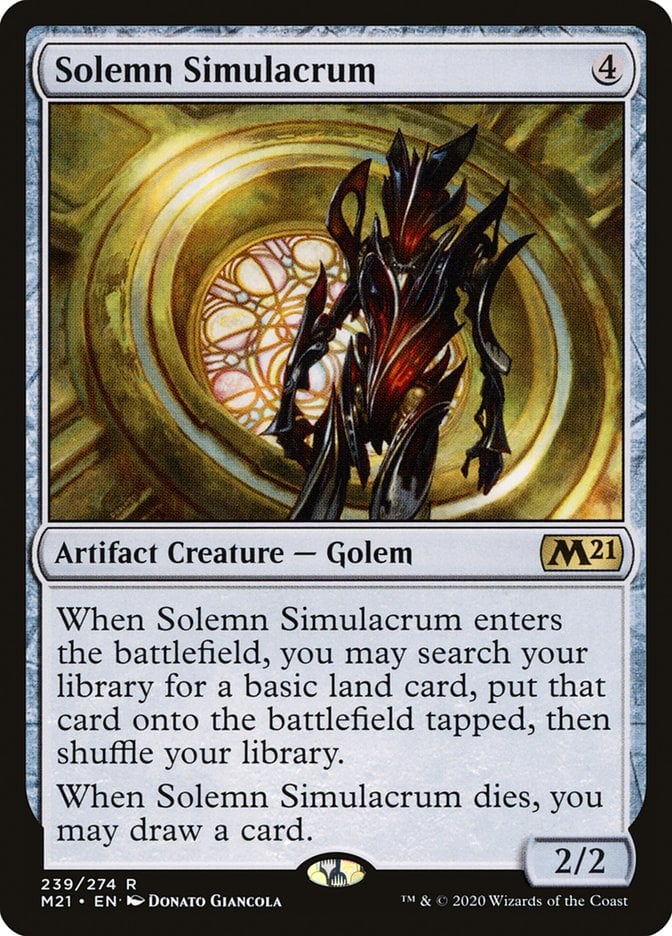
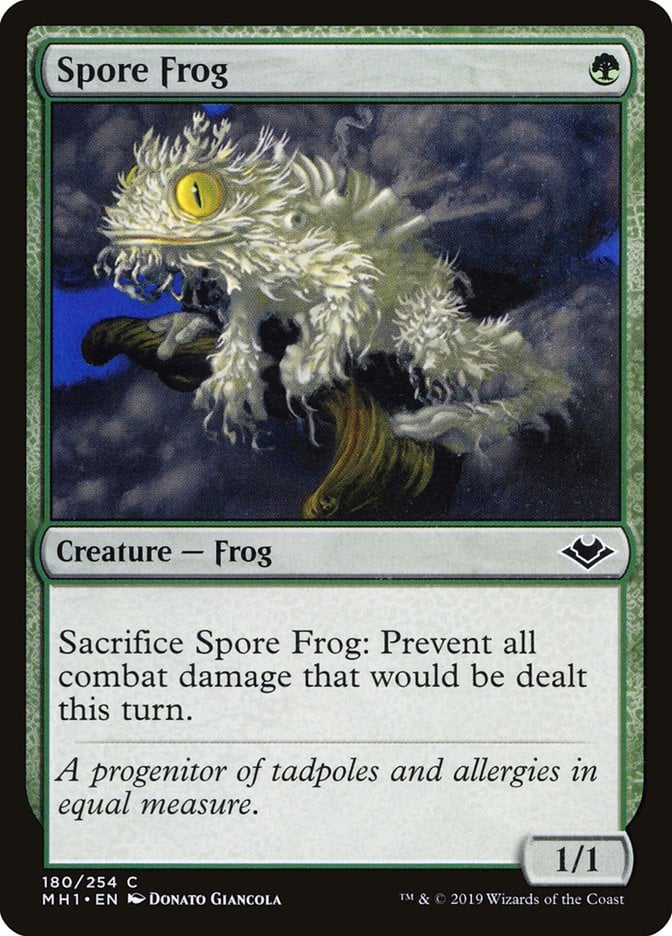
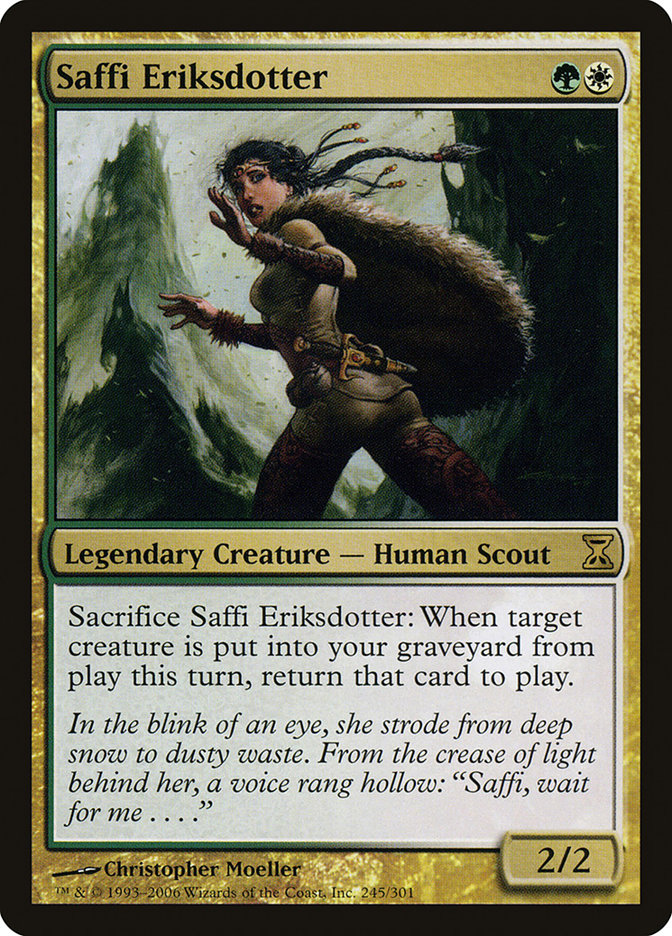
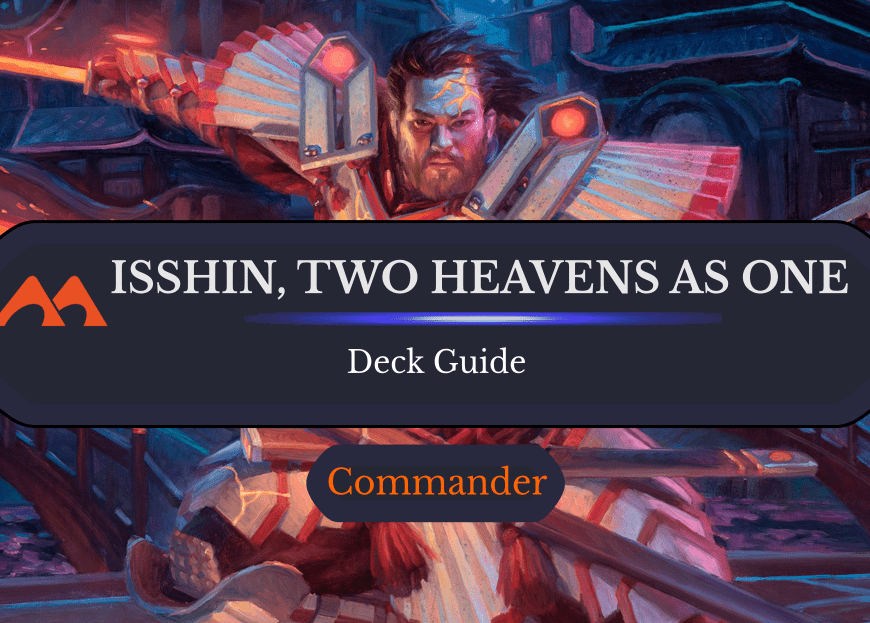

Add Comment